Nothing delights the archaeologist more than excavating the ruins from some ancient disaster–be it a flood, earthquake, invasion, or massacre. This does not reflect an inordinately ghoulish tendency in the character of archaeologists. It is simply that a much more complete picture of the life and times of an ancient site is preserved if it was the victim of some quick, devastating disaster than if it had just died a slow natural death, had been abandoned or remodeled.
The classic example of the rewards that we can reap as the result of an ancient natural disaster is Pompeii where the eruption of Vesuvius preserved for posterity a full-scale authentic model of daily life in an ancient Roman town. But more popular with historians are disasters that can be blamed on mankind itself. Scholars and laymen alike have always delighted in being able to boo and hiss the evil villain, the murderous invader, the barbarian hordes. Only the approach is different–the one flicks on the “Late Show,” the other writes learned footnotes.
![Mohenjo_Map]()
One of the most enigmatic whodunits of antiquity concerns the decline and fall of the Indus Valley (Harappan) civilization. Remains of this vast civilization of South Asia are scattered over an area considerably larger than those covered by either ancient Egypt or Mesopotamia. The life cycle of this third major experiment in the origin and development of the world’s earliest civilizations is at present highly speculative and is the subject of increasingly intensive investigation by archaeologists, historians, linguists, and natural scientists alike.
It is now apparent that a re-evaluation is necessary of some of the earlier theories that have come to form over the past thirty years the basic structural members in the framework of early South Asian history. It is especially necessary to call for a retrial concerning the placing of guilt for the demise of the Indus civilization. Evidence was published some 30 years ago suggesting that Mohenjo-daro, the southernmost of the two major cities of the Harappans, was destroyed by armed invaders and that the hapless victims–including a large percentage of women and children–were massacred on the spot. The excavators of Mohenjo-daro were content–at least at first–to put the blame for the “massacres” on several disassociated causes and incidents. The “massacre” idea immediately ignited and has been used as a torch up to the present day by some historians, linguists, and archaeologists as visible, awful proof of the invasion of the subcontinent by the Aryans. It provided a seemingly pat answer to one of the most vexing questions in South Asian history. The arrival into northern India of the Aryans–the eastern branch of the vast Indo-European language family–heralded the beginning of the historical era in South Asia. The social and religious life of the times is described in detail in the hymns of the Sanskrit Rig-Veda, the earliest book known in India. The Vedic hymns describe the principal god, Indra, as the “fort destroyer” who “rends forts as age consumes a garment.” In attacking the fortresses of the dasyu (the name applied to the non-Aryan enemies, be they mortal or supernatural), Indra is specifically described as setting fire to the buildings—
…in the kindled fire he burnt up all
their weapons, and made him rich with
kine and carts and horses.
![Panoramic view of Mohenjo-daro with the citadel on the horizon]() Panoramic view of Mohenjo-daro with the citadel on the horizon
Panoramic view of Mohenjo-daro with the citadel on the horizonThe texts describe how the Aryan warriors were protected by armor and shields. In addition to the bow and arrow–the chief weapon–they used javelin, axe, and sword. Horses were common but were probably used to pull the chariots rather than for riding.
It seems logical to assume that, as Sir Mortimer Wheeler put it, “Indra stands accused” of destroying the cities of the Harappan civilization and of the responsibility for the “massacre” at Mohenjo-daro. Apart from a few dissenting comments in rather obscure publications, the general literature on the subject current today still repeats vivid, dramatic descriptions of the barbarian hordes descending upon the once great and proud cities of the Indus civilization. For example:
The Indus cities fell to barbarians
who triumphed not only through
greater military prowess, but also be-
cause they were equipped with better
weapons, and had learnt to make full
use of the swift and terror-striking
beast of the steppes (i.e. the horse).
(Basham, 27)
It is still premature to talk in terms of absolute dates–the entire chronology of South Asia down to the 6th century B.C. is a web of pluses and minuses of hundreds of years–so, on purely chronological grounds, we cannot even establish a definite correlation between the end of the Indus civilization and the Aryan invasion. But even if we could, what is the material evidence to substantiate the supposed invasion and massacre? Where are the burned fortresses, the arrowheads, weapons, pieces of armor, the smashed chariots and bodies of the invaders and defenders? Despite the extensive excavations at the largest Harappan sites, there is not a single bit of evidence that can be brought forth as unconditional proof of an armed conquest and destruction on the supposed scale of the Aryan invasion. It is interesting that Sir John Marshall himself, the Director of the Mohenjo-daro excavations that first revealed the “massacre” remains, separated the end of the Indus civilization from the time of the Aryan invasion by two centuries. He attributed the slayings to bandits from the hills west of the Indus, who carried out sporadic raids on an already tired, decaying, and defenseless civilization.
What of these skeletal remains that have taken on such undeserved importance? Nine years of extensive excavations at Mohenjo-daro (1922-31)– a city about three miles in circuit–yielded the total of some 37 skeletons, or parts thereof, that can be attributed with some certainty to the period of the Indus civilization. Some of these were found in contorted positions and groupings that suggest anything but orderly burials. Many are either disarticulated or incomplete. They were all found in the area of the Lower Town–probably the residential district. Not a single body was found within the area of the fortified citadel where one could reasonably expect the final defense of this thriving capital city to have been made.
It would be foolish to assert that the scattered skeletal remains represent an orderly state of affairs. But since there is no conclusive proof that they all even belong to the same period of time, they cannot justifiably be used as proof of a single tragedy. Part of this uncertainty results from the unsatisfactory methods used by the excavators to record and publish their finds. But even allowing for this serious methodological shortcoming, it is possible to re-evaluate the published evidence and to come to some definite conclusions concerning the massacre myth.
![The so-called massacre in HR area, Room 74 of House V]() The so-called massacre in HR area, Room 74 of House V
The so-called massacre in HR area, Room 74 of House VThe most celebrated group of skeletons, the photograph of which is usually published to provide visible proof of the “massacre,” was found in the area of Room 74, House V (HR area). The interpretation of this grisly discovery was not even agreed upon by the excavators themselves. Mr. Hargreaves, who did the actual excavating, states that because four of the fourteen skeletons were found above the ruins of the southern wall of the room, the entire group belongs to a date subsequent to the decay of the building and thus to a period posterior to the abandonment of the latest stage of the city. Marshall, the over-all director of the excavations, says on the other hand “this does not seem to be proven.” He points out that the building belongs to the Intermediate period of the city and that this entire area was covered over and rebuilt in the Late period (the assumed Late period remains were not preserved at this part of the city; it is probably they had eroded away). Marshall suggests that the skeletons could belong to the interval between the Intermediate and Late periods, “though the possibility of their being posterior to the Late period may be admitted.” He also disagrees with Hargreaves over the circumstances that produced this gruesome spectacle. Hargreaves stated with questionable perspicacity that fourteen bodies “appear to indicate some tragedy.” Furthermore, he observed that the twisted, intermingled positions of the bodies are those “likely to be assumed in the agony of death than those of a number of corpses thrown into a room.” Marshall read the evidence differently. He believed that the bodies were intentionally interred “within a few hours of death” or else they would have been prey for animals and birds. “There is no reason whatever for doubting that these burials date from the declining years of Mohenjo-daro’s prosperity,” stated Marshall, but he didn’t suggest they represent any final massacre of the population.
![Group of skeletons in Room 74]() Group of skeletons in Room 74
Group of skeletons in Room 74During the removal of the thick accumulation of debris covering a courtyard of the Intermediate period (House III, HR area), incomplete remains of three skeletons were found. Their location in the debris shows, however, that they did not belong to the time of the courtyard but to sometime after it had fallen into disuse and had been filled in, possibly in preparation for the buildings of the Late period. The excavator suggests that it represents a late funerary deposit and doesn’t intimate any connection with a final “massacre” of the city’s population. Those who have so stated have misread the archaeological evidence.
![The carts used today are exactly like the ancient clay models]() The carts used today are exactly like the ancient clay models
The carts used today are exactly like the ancient clay modelsOne reads about “the slaughtered Harappans” who “lay unburied amid their streets.” This melodramatic description was prompted, in part, by the reported find of six skeletons in a lane between two houses in the VS area of Mohnejo-daro. And yet, the excavator stated in his report that “from their position they appear to be posterior to the adjacent remains.” They were covered with loose earth, free from bricks and other debris that would indicate any violent destruction. There is no suggestion in the report that they were lying on the actual street surface. Marshall suggests again that they were probably burials of the Late period that just accidentally penetrated down between the building walls bordering the lane–the lane itself having been long before covered over. Had the skeletons really been found directly on the street surface, there would still be no case for a final “massacre” because the lane belongs to the Intermediate period of the city.
Deadman’s Lane in the HR area of the city was the scene of another well publicized but mythical street slaughter. One fragmentary skeleton (part of a skull, the bones of the thorax, and the upper arm of an adult) was found lying on its back diagonally across the narrow lane. But this incomplete skeleton was not resting directly on the walking surface of the lane. It appears to have been in the debris that accumulated between the walls of the building facing the lane sometime after the lane had fallen into disuse. The lane itself belongs to the Intermediate period of the city. This area was rebuilt during the Late period and houses covered the location of the earlier lane. The excavator suggests that this partial skeleton was interred under the floor of a house of the Late period. Thus, it was just accidentally located in the proximity of the lane and was not associated with it at all.
![Skeleton in lane between XVIII and XXXIII, VS area]() Skeleton in lane between XVIII and XXXIII, VS area
Skeleton in lane between XVIII and XXXIII, VS areaAnother celebrated group of “victims” consists of nine skeletons that “lay in strangely contorted attitudes and crowded together” (Block 10A, DK area). Ernest Mackay, the excavator, expressed considerable doubt about the date of these remains. They were reportedly found at a level corresponding to the early part of the Intermediate period. For “convenience sake,” Mackay termed the find-spot a burial pit although he admitted that he noticed no definite walls for the “pit” nor any traces showing that the area had been dug. Only two objects were found with the skeletons–an ivory comb that is not like the know Harappan period combs, and a copper bracelet. On the evidence of the bracelet, Mackay dates the remains to “the period of the occupation of the city.” The technical report on the skeletal remains states that they probably do not represent a massacre per se because many of the skeletons were incomplete, represented by only a few fragments of cranium and odd bits of bone.
Mackay suggests that these were the remains of a family who tried to escape from the city with their belongings at the time of a raid but were stopped and slaughtered by the raiders. Their bodies were then “thrown pell-mell into a hurriedly made pit.” He says it is “quite possible” that the tragedy took place in the final period of the city but can offer no supporting evidence. That at least five of the nine skeletons were of children prompted the anthropologist who studied the remains to conclude that “the raiders nursed a consistent hatred of the people of Mohenjo-daro as a whole, and total extermination appears to have been their endeavour.”
![The Well Room Tragedy, DK area, G section]() The Well Room Tragedy, DK area, G section
The Well Room Tragedy, DK area, G sectionFinally, in bringing this rather macabre account to an end, mention must be made of the lone bit of evidence from Mohenjo-daro that could conceivably be used as positive evidence of some murderous tragedy during the Late period of the city. In what we might call the “Well Room Tragedy” (DK area, G section), two skeletons were found on a flight of stairs “evidently lying where they died in a vain endeavour with their last remaining strength to climb the stairs to the street.” But the circumstances surrounding this tragedy are unknown and it would be presumptuous to cry “massacre” on this bit of evidence alone.
Thus stands the evidence in the case against Indra and the Aryans, or to be less specific, against the idea of a “final massacre” by whomever you prefer. The contemporaneity of the skeletal remains is anything but certain. Whereas a couple of them definitely seem to represent a slaughter, in situ, the bulk of the bones were found in contexts suggesting burials of the slopiest and most irreverent nature. There is no destruction level covering the latest period of the city, no sign of extensive burning, no bodies of warriors clad in armor and surrounded by the weapons of war. The citadel, the only fortified part of the city, yielded no evidence of a final defence. (See photograph on page 4.)
The evidence that is being gathered by present investigators from various branches of the natural and physical sciences is tending to support–in part– the theory expressed years ago by Mackay. Regarding the decay of Mohenjo-daro and the Harappan civilization, he suspected the cause to be “the vagaries of the Indus rather than pressure by invaders, of whose existence we have, in fact, little positive evidence.”
The details of the story of the decline and fall of the Indus civilization are, as yet, far from clear, but a pattern of contributing factors is taking shape. This pattern does not include invasion and massacre as basic factors. On the contrary, it appears that a series of natural disasters occurred–possibly as swiftly, certainly more devastating than any hypothetical invasion. A sudden rise in the Arabian Sea coastline of West Pakistan apparently took place sometime around the middle of the second millennium B.C. This resulted in a disastrous increase in the already serious floods in the major river valleys with the subsequent rise of the underground water table, contributing to an increase in the soil salinity to the point where it was impossible to sustain the population of the vast urban settlements. The economy must have decayed rapidly; the Harappans were forced to migrate gradually to more fertile territory.
There is now incontrovertible archaeological evidence that the major population shift was to the southeast into the area of the Kathiawar peninsula, north of Bombay.
![George F. Dales is Assistant Curator in charge of the Museum's new Section of South Asia Archaeology. He received his Ph.D. in Oriental Studies at the University of Pennsylvania in 1960; then went to the Royal Ontario Museum, Toronto, as Assistant Curator in the Near Eastern Department for two and a half years. He has excavated in Egypt, Jerusalem (Jordan) , Iraq, and Iran; and directed the Makran Coast Expedition to West Pakistan for the University Museum in 1960. He is now proposing to direct extensive excavations at Mohenjo-daro, one of the two capitals of the ancient Indus Valley civilization.]() George F. Dales is Assistant Curator in charge of the Museum’s new Section of South Asia Archaeology. He received his Ph.D. in Oriental Studies at the University of Pennsylvania in 1960; then went to the Royal Ontario Museum, Toronto, as Assistant Curator in the Near Eastern Department for two and a half years. He has excavated in Egypt, Jerusalem (Jordan) , Iraq, and Iran; and directed the Makran Coast Expedition to West Pakistan for the University Museum in 1960. He is now proposing to direct extensive excavations at Mohenjo-daro, one of the two capitals of the ancient Indus Valley civilization.
George F. Dales is Assistant Curator in charge of the Museum’s new Section of South Asia Archaeology. He received his Ph.D. in Oriental Studies at the University of Pennsylvania in 1960; then went to the Royal Ontario Museum, Toronto, as Assistant Curator in the Near Eastern Department for two and a half years. He has excavated in Egypt, Jerusalem (Jordan) , Iraq, and Iran; and directed the Makran Coast Expedition to West Pakistan for the University Museum in 1960. He is now proposing to direct extensive excavations at Mohenjo-daro, one of the two capitals of the ancient Indus Valley civilization.Here the Harappans mingled with other indigenous populations and gradually there was a complete absorption and transformation of the remnants of the formerly great Harappan culture into what we are coming to recognize as a distinctive chalcolithic culture of Central India. The former capitals of Mohenjo-daro and Harappa were virtually abandoned and became easy prey for bandits from the Baluchistan hills.
The enemy of the Harappans was Nature aided and abetted by the Harappans themselves, who accelerated the spoiliation of the landscape through improper irrigation practices, and by denuding the watersheds through overgrazing and deforestation. They would have eventually put themselves out of business through such malpractices–just as the Sumerians did in southern Mesopotamia–but the process was speeded up by a sardonic twist of the earth’s surface. Thus ended one of the three earliest civilizations of antiquity–Indra and the barbarian hordes are exonerated.
![Journal of the American Oriental Society]() Albright, WF and PE Dumont, 1934, A parallel between Indic and Babylonian Sacrificial Ritual, in: Journal of the American Oriental Society, Vol. 54, No. 2 (June, 1934), pp. 107-128
Albright, WF and PE Dumont, 1934, A parallel between Indic and Babylonian Sacrificial Ritual, in: Journal of the American Oriental Society, Vol. 54, No. 2 (June, 1934), pp. 107-128




































.jpg)








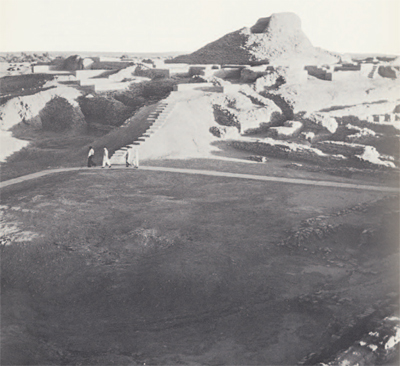
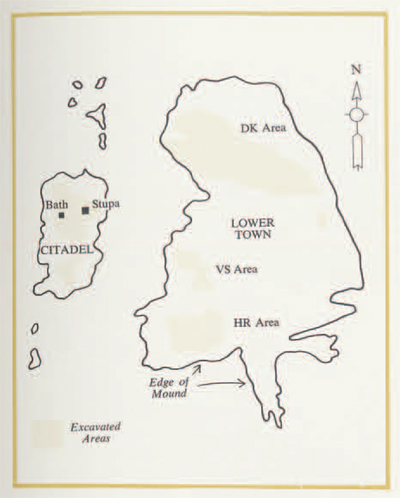
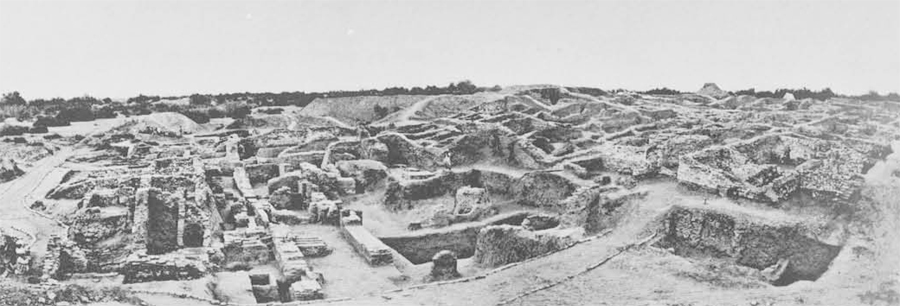
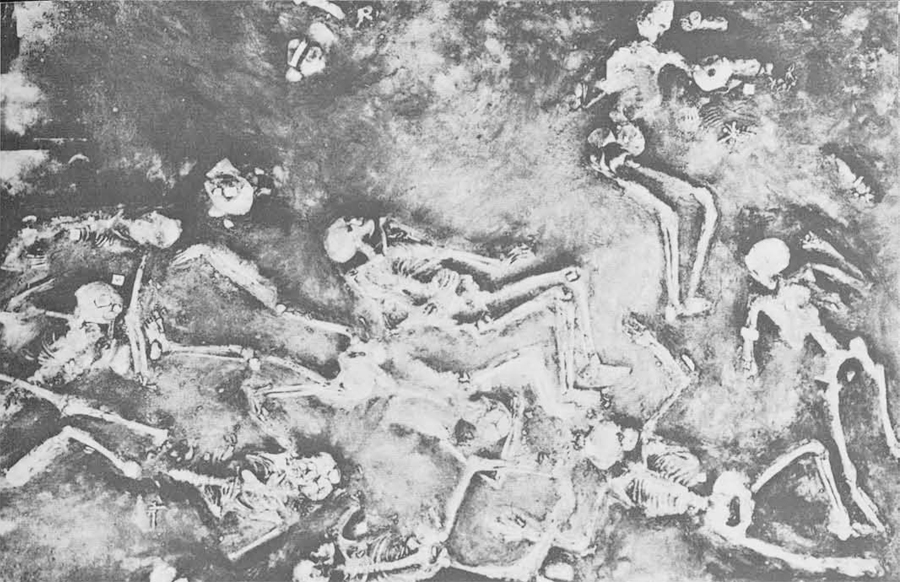
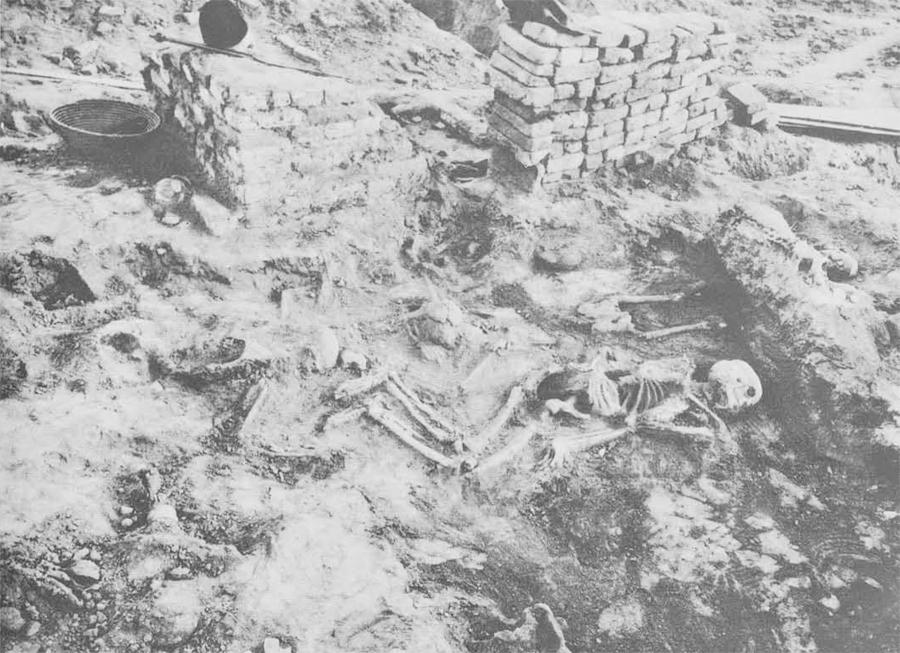

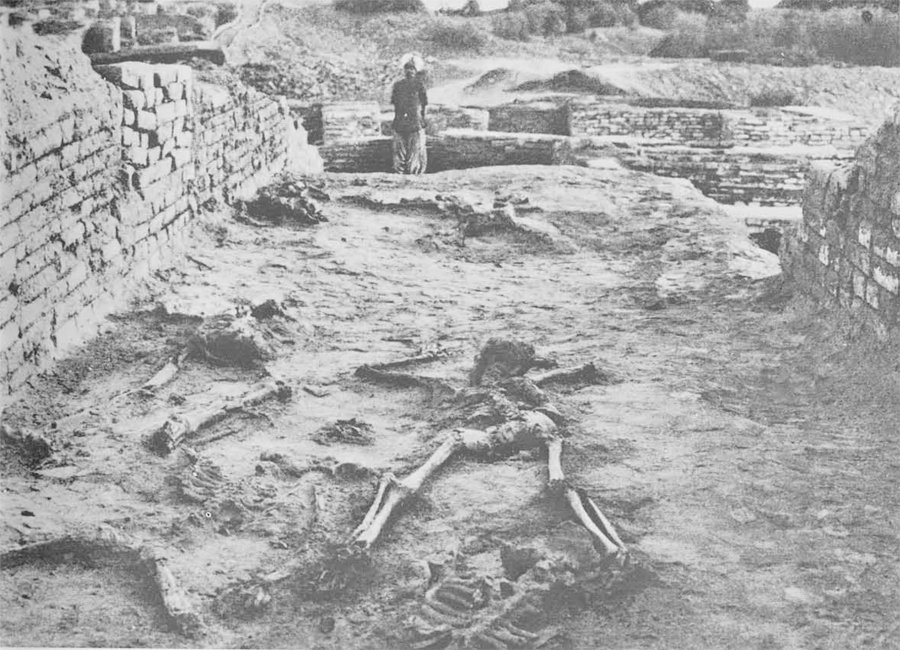
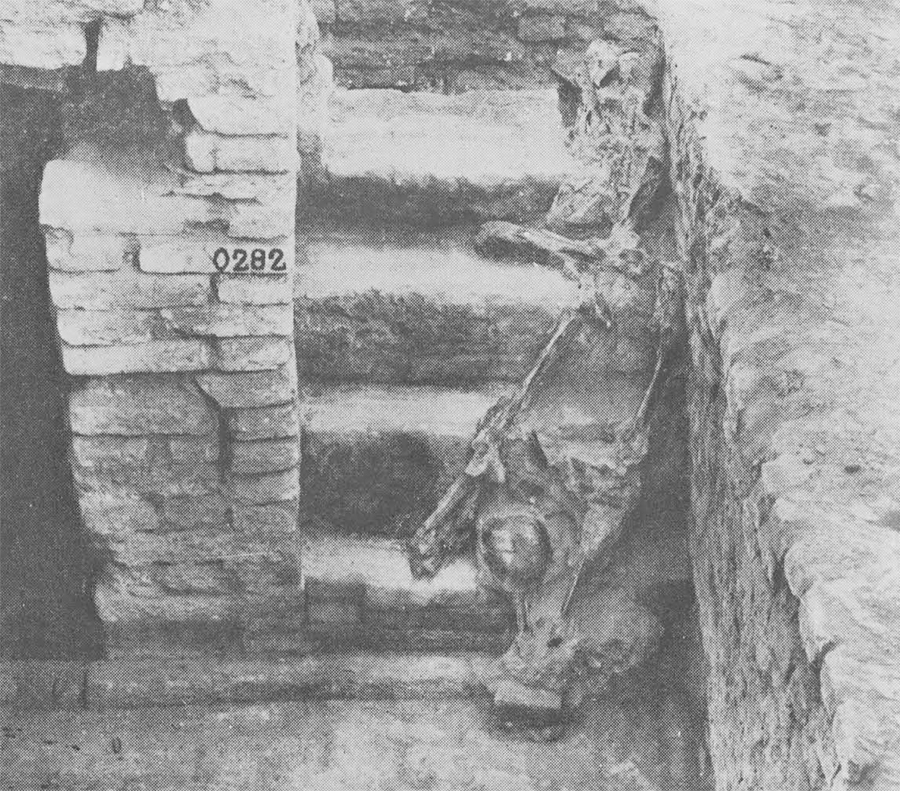
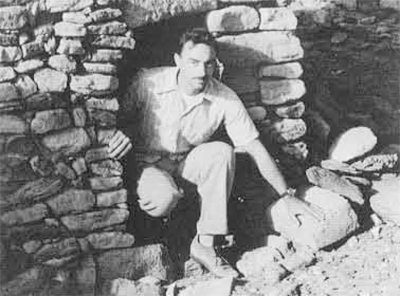













































1 comment :